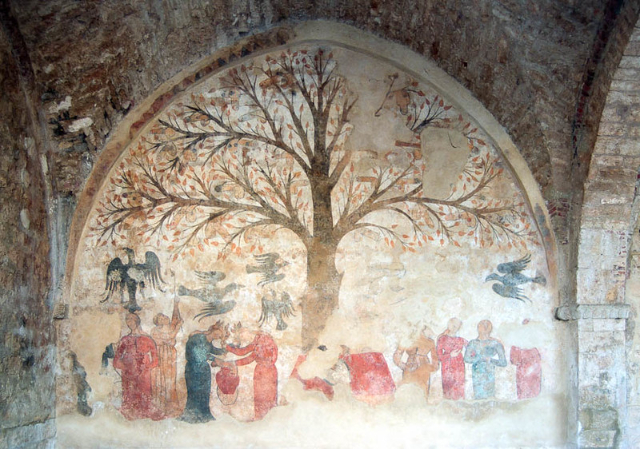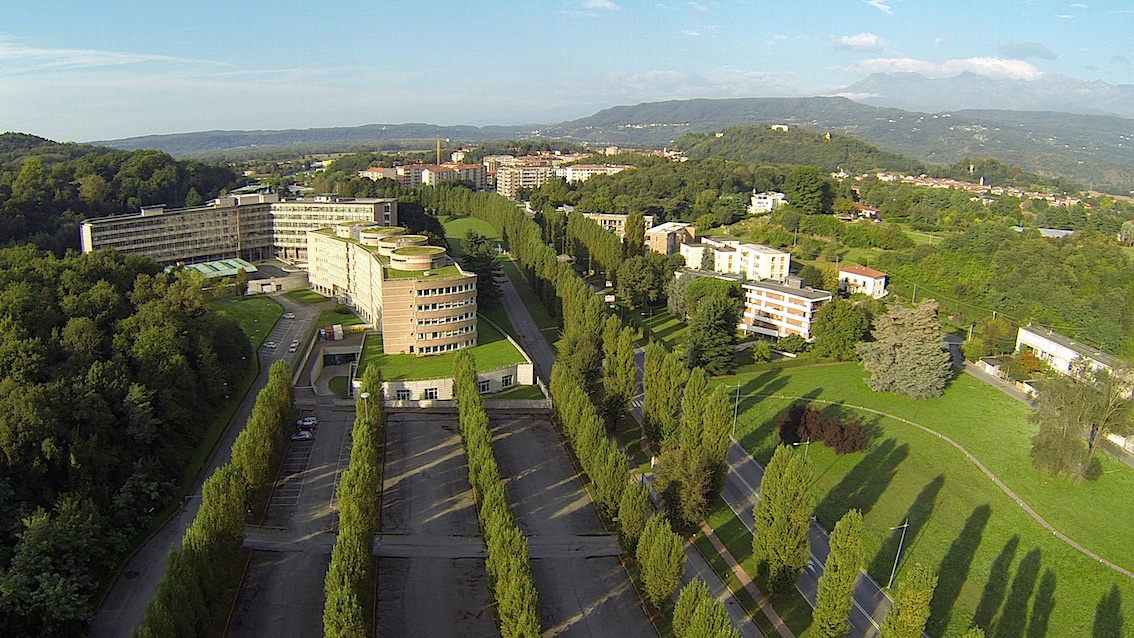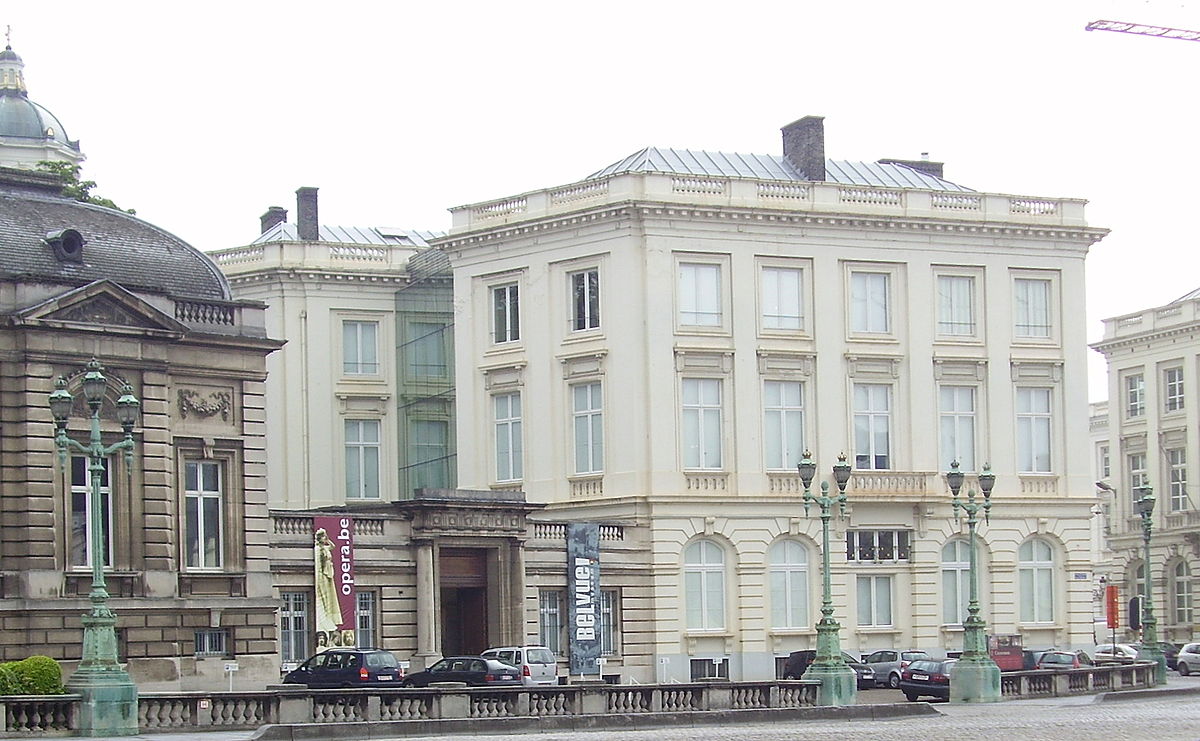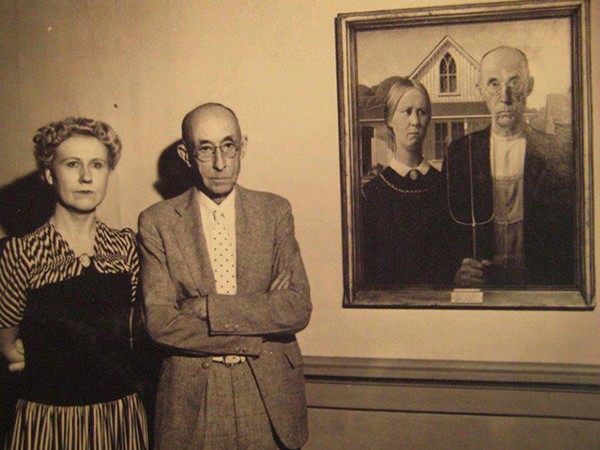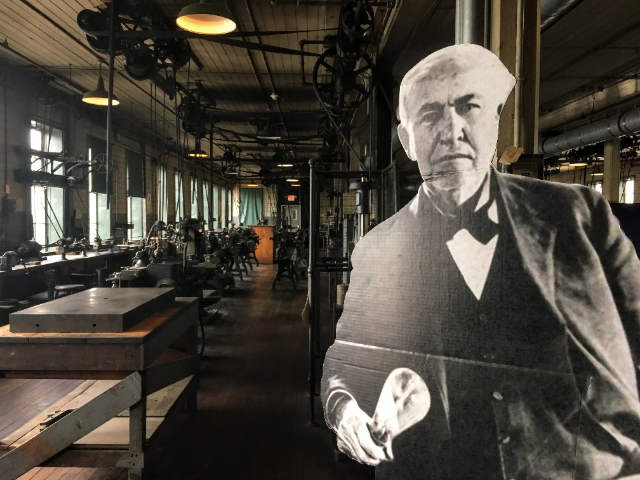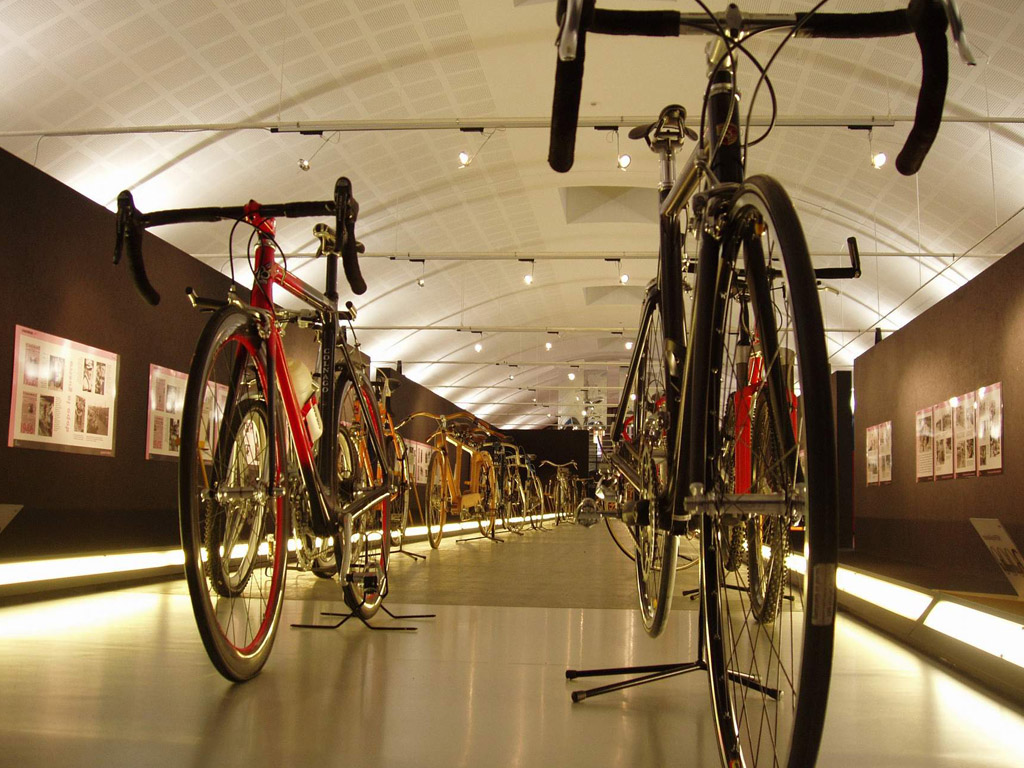In Massa Marittima, a small town in Tuscany, still stands the Palazzo dell’Abbondanza, which in the 14th century was known as the Magazzino del Grano because of the construction of grain stores on the second floor. This three-story building has three pointed arches on the long side, which provide access to the water tanks of the Fonte dell’Abbondanza. The Fonte, built in 1265 at the request of the Ghibelline podestà Ildebrando Malcondine da Pisa, served as a water supply connected to the city aqueduct.During restoration work in 1999, a wall fresco known as "The Tree of Fertility" was unearthed under the left arch, which immediately attracted attention. The giant fresco depicts a tree with branches sprouting small leaves and male sex organs. Two separate scenes involving women unfold at the roots of the tree: on the left, four women appear to be engaged in ritual in a tense atmosphere while black birds, presumably crows, fly overhead; on the right, four women hold each other by the arms.The first interpretation, after the find, links the ancient association between the male organ and water, a symbol of life and fertility, as well as the auspiciousness of prosperity and abundance for the city and its inhabitants, dating back to ancient Greek times and later to the Middle Ages.The dating of the fresco remains uncertain. Some studies suggest it was commissioned at the same time as the Fountain, while others believe it was made later by the Guelph administration that ruled the city from 1267 to 1335.Scholar George Ferzoco inclines toward the latter dating, offering an interpretation of the theme that contrasts with the former. According to Ferzoco, the fresco was created by the Guelph government as a warning to the city about what would happen should a Ghibelline administration return: sterility and famine. Reference is also made to the rituals performed by the women depicted, comparing them to those described in Malleus Maleficarum, a 1487 Latin treatise published by the Dominican friar Heinrich Kramer and his colleague Jacob Sprenger. The ceremony depicted and described in the treatise would have been performed by witches, who, after castrating men, would place their genitals in birds’ nests to grow them back and use them in other rituals and ceremonies.According to Ferzoco, the painting can be regarded as the first political-administrative manifesto in history, typical of the tradition of politicized public art in Tuscany, as evidenced by the works of Lorenzetti.A more recent interpretation by Maurizio Bernardelli Curuz attributes the commissioning of the Tree of Fertility to the Ghibelline Ildebrando Malcondine. It would have been he who commissioned the fresco as a testimony to the public work rendered to the city of Massa Marittima, a symbol of Ghibelline good government, which would have solved problems related to water supply through the fountain and aqueduct, as well as supplies of wheat and other grains in case of famine.However, there are still inconsistencies in the various interpretations proposed so far, making the ancient fresco interesting and the subject of study and research by Italian and foreign institutions, creating an aura of mystery around it.
